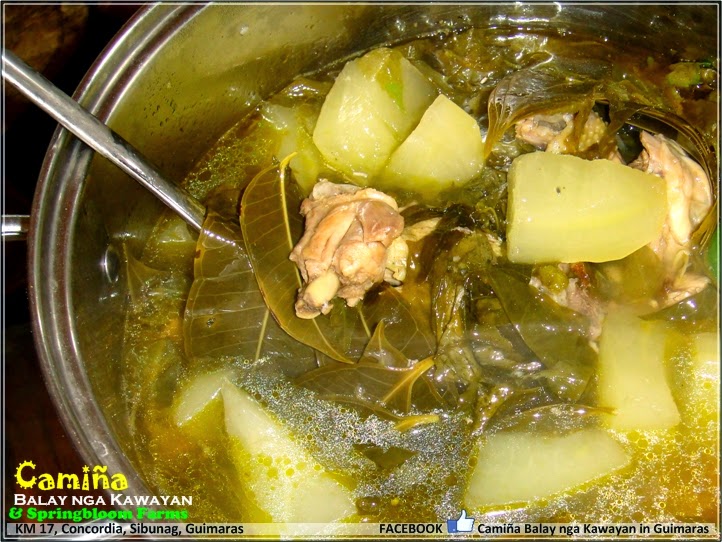Tinolang Manok is among the most popular chicken dishes in the country with several version scattered throughout the regions.
But the most popular involves the trinity of native chicken, papaya and dahon ng sili (or malunggay) plus the aroma and taste of ginger.
It is also easy to cook and if one uses Bisaya na manok (free-roaming, native chicken), it makes the chicken soup more tasty.
- 1 native chicken, cut into serving pieces
- 1 unripe papaya, cut into wedges
- 2 cups dahon ng sili (chili leaves) or malunggay (moringa)
- 1 stalk tanglad (lemon grass), knotted
- 1 thumb size ginger, sliced
- 3 cloves garlic,
- 1 small onion,
- 5 cups water
- 5 tbsp. patis (fish sauce)
- Salt and pepper
- In a pan, saute the ginger, garlic and onion.
- Add the chicken and stir fry for 2-3 minutes.
- Season with fish sauce, salt and pepper. Mix well and cover to allow the flavors to blend.
- Add water (just adjust quantity) and papaya. Bring to a boil until the chicken and/or papaya are tender.
- Place the lemon grass then simmer until almost done. Make flavor adjustments, if desired.
- Add the chili leaves then simmer for half a minute or until the chili leaves are cooked.
- Remove from heat and transfer in a serving bowl. Don't forget to remove the lemon grass stalk.
- Serve hot.
 |
| Tinola with Dahon ng Libas () |



